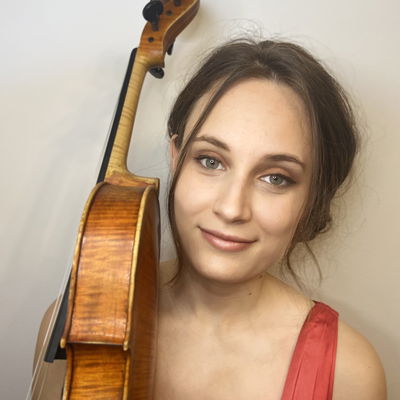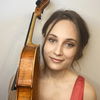
-
Capacity
- 28 of 30 spots still available

- Bring your own drinks
- Alcoholic and non-alcoholic drinks provided
-
Wheelchair access
- Wheelchair Accessible
-
- Some stairs may be present in the space
-
- Click here for more accessibility details
-
- Kid-friendly event
This is a groupmuse
A live concert in a living room, backyard, or another intimate space. They're casual and friendly, hosted by community members.
Host
We are the Quinta String Quartet, who formed this past semester as DMA students at Stony Brook University! We are delighted to wrap up our semester by presenting a genre-bending evening of classical music starting with Haydn's Op. 64 No. 4, followed by Bartók's String Quartet No. 2, followed by a surprise arrangement of one of ROSALÍA's songs from her new album, Lux! Whether you're a classical music enthusiast or just curious about experiencing new sounds in an cozy, intimate space, this concert is for you! We look forward to seeing you all very soon!
We will provide some drinks and snacks, and encourage anyone who attends to bring snacks or drinks to the party so that we can mingle and have a great time afterwards!
Warmly,
The Quinta Quartet
What's the music?
Tonight’s program traces a bold arc across three centuries of string writing, moving from the elegance and wit of the Classical era to the stark modernism of the early 20th century and finally to a contemporary reimagining of flamenco through the lens of global pop. Though these works differ widely in style, each explores the expressive possibilities of the string quartet—and, more broadly, how musical traditions evolve and endure.
Composed during Haydn’s final years in service to the Esterházy court, Op. 64 No. 4 belongs to the so-called “Tost” quartets, named for the violinist Johann Tost, who championed the set. The quartet opens with a lyrical Allegro marked by Haydn’s trademark balance between grace and surprising dramatic turns. The central slow movement, in the warm key of E major, unfolds with operatic tenderness, its long-breathed melodies hinting at Haydn’s gift for vocal writing. A minuet follows that is anything but courtly—its syncopations and unexpected accents feel mischievous rather than polite. The finale then bursts forward with a rustic, folk-like energy, showcasing Haydn’s brilliant sense of timing and playful virtuosity. As in so many of his quartets, Haydn’s Op. 64 No. 4 reveals the form’s expressive range at a moment when he was codifying what the modern string quartet could become.
Composed during the upheavals of World War I, Bartók’s Second Quartet is a stark, deeply human work that confronts extremes of emotion. Across its three movements, Bartók blends elements of Hungarian folk music with his signature modernist language. The first movement is introspective and haunting, built from small motivic fragments that bloom into austere lyricism. The central movement—a vigorous, rhythmically driven Allegro—explodes with propulsive folk rhythms and biting dissonances, a whirlwind of motion that Bartók described as a kind of “dance.” The final movement returns to a world of desolation: sparse textures, lamenting lines, and a sense of suspended time. Bartók described its character as “a message of an inner world,” and indeed the quartet ends not with resolution but with quiet disappearance. In its emotional breadth and structural clarity, the Second Quartet stands as a cornerstone of 20th-century chamber music.
Location
Exact address sent to approved attendees via email.
This is a groupmuse
A live concert in a living room, backyard, or another intimate space. They're casual and friendly, hosted by community members.
Host
Attendees



 Continue with Facebook
Continue with Facebook
 Continue with Google
Continue with Google
 Continue with Apple
Continue with Apple
Comments
Comment sections are only for participants. Please sign in and reserve a spot above to view comments.